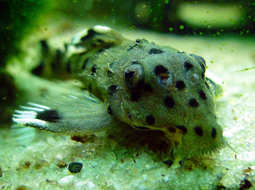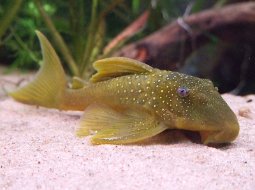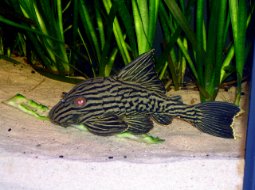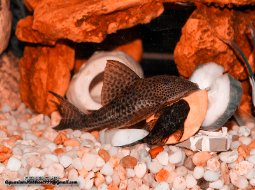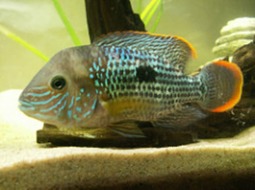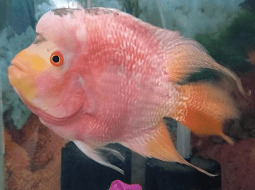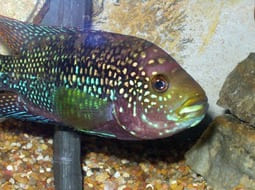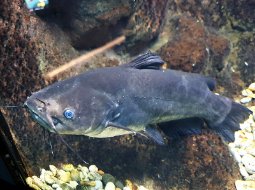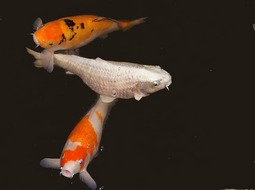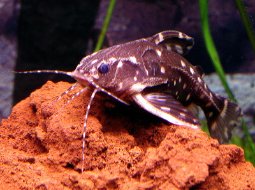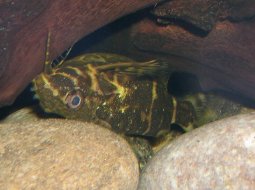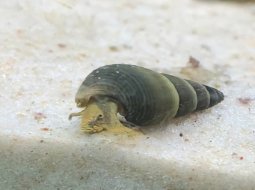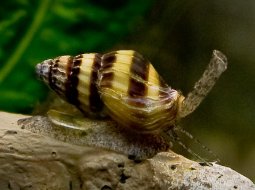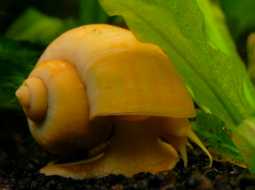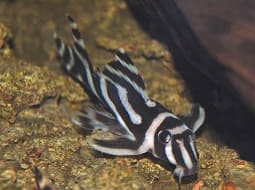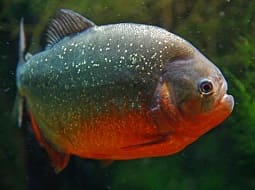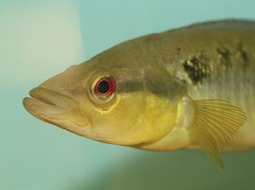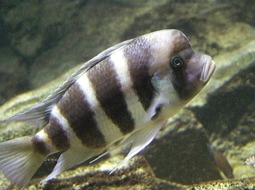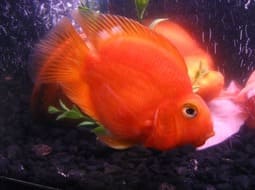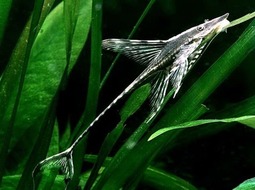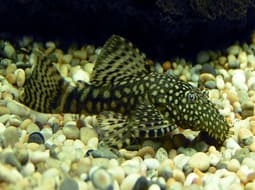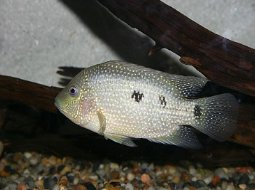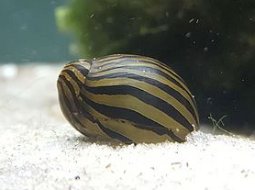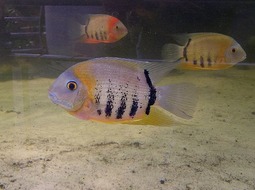
Loading Aqualapp ...
Care and Compatibility of Oscar Fish - Astronotus ocellatus
Introduction
The Oscar Fish (Astronotus ocellatus) is a popular species in aquariums due to its striking appearance and unique character. They are large and strong fish, with an oval shape and bright colors ranging from black, brown, orange, to red. They are native to South America and are found in warm and calm rivers and lakes. Oscars are known for their intelligence and ability to interact with their keepers.
Behavior
The Oscar Fish is known for its aggressive and territorial behavior. It is a large and robust fish that can defend its territory from other fish. It can display dominant behaviors and can be aggressive towards other fish in the aquarium, especially if they are smaller in size or have bright colors. It is recommended to keep them in a spacious aquarium with other fish of similar size and compatible behavioral characteristics.
Sexual Dimorphism
Sexual dimorphism in Astronotus ocellatus is difficult to distinguish when they are young. As they mature, males tend to develop larger heads and more robust bodies compared to females. Additionally, males often have a longer, pointed dorsal fin.
Reproduction
The reproduction of Oscar Fish is a complex and challenging process in an aquarium environment. Breeding Oscars requires a larger aquarium and specific conditions of water, temperature, and feeding. Oscars are oviparous fish, and females can lay hundreds of eggs on flat surfaces or in prepared cavities. The incubation and rearing of the fry can be complicated and require special care. Successful breeding is usually achieved in specialized facilities.
Aquarium Conditions
Astronotus ocellatus is a territorial fish that appreciates open spaces and hiding spots. A spacious aquarium with rocks, driftwood, and sturdy plants that can withstand its activity is recommended. Maintaining good water quality and an efficient filtration system is important.
Feeding
Oscars are predators and have a carnivorous diet. They primarily feed on small fish, crustaceans, and insects. In captivity, you can feed them live foods such as small fish, shrimps, and worms, as well as high-quality commercial foods in the form of pellets or tablets. Make sure to offer a varied and balanced diet to maintain their health and vitality.
Complexity
Astronotus ocellatus is of moderate care. It requires a balanced diet and regular aquarium maintenance. It can be tolerant of beginner mistakes but needs attention to detail to prevent health and behavioral issues.
In case you need more help, or if you want to know into any topic related to the Astronotus ocellatus (Oscar Fish) and even any other species you can use the forums to ask what you need.
To do an analysis more detailed about coexistence and behavior of Astronotus ocellatus (Oscar Fish) use the Aquarium simulation tool, if you do this you can test different ways to combine the Oscar Fish with other fishes giving the dimensions and space on you aquarium, on this way you can known the optimal configuration for keep the fishes that you want.
You can also find out the 35 species compatible with the Astronotus ocellatus (Oscar Fish) can live together.
Note: The parameters of the water such as PH and temperature are also used to calculate the compatibility of the species.
Compatible species (35)
Compatible (6 Species)
Compatible without any restriction
Please note that the catfish must not fit in the oscar 's mouth.
Knowing Yourself From Small (5 Species)
The oscar fish can live with others of the same species if they are used to their presence among themselves, it is probable that between the males they compete for territory and there are aggressions.
They can live together if they have known each other since they were very small, that is, they grew up and grew up together. it does not work in all cases, there may be exceptions.
Similar Sizes (4 Species)
They can coexist if they are the same size or very similar sizes, it does not work in all cases, there may be exceptions.
With Reservation (17 Species)
By nature these fish know that they should not eat other fish with an exoskeleton but it could be the case that they try to eat it out of hunger or because of the fish's personalize.
Las especies territoriales por lo general pueden convivir con especies protegidas con coraza, ya que no pueden hacerles daño por su dura piel, lo que si hay que tener en cuenta es tener un acuario con dimensiones favorables para que cada pez pueda delimitar un territorio, ya que la mayoría de peces acorazados son también peces de fondo y les gusta estar buscando lugares donde ocultarse.
Compatible in some cases, it depends on the nature and personality of the fish.
Showdown over territory (1 Species)
Fish can live together as long as the space is spacious enough to delimit a territory, otherwise there may be aggressions for competing for the territory.
Considerable size difference (1 Species)
They can coexist while they are similar in size or the size difference is not very abysmal, since as the fish grows it increases the chances of eating its partner that did not grow much.
Compatible if space is enough (1 Species)
If they have space and there are no partners there should be no problems
Oscar Fish
Astronotus ocellatus

- Ph: 6 - 8
- Temperature (c°): 22 - 30
- Measures: 25 cm - 30cm
- Aquarium Capacity:
150 Liters - 40 Gallons - Alimentación: Carnivores, Piscivore
- Colores: Black, Orange, White
- Comportamiento: Aggressive, Territorial
- Habitad: American
- Preferencias del Acuario: Logs, Rocks
- Tamaño: Big
- Taxonomía: Cichlids, Fish
- Tipo de Agua: Sweet water, Tropical waters
- Velocidad de nado o movimiento: Normal
- Zona de Nado: Swim in the middle of the aquarium

.jpg)
